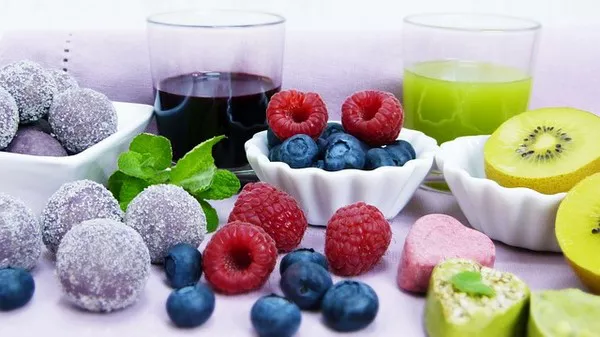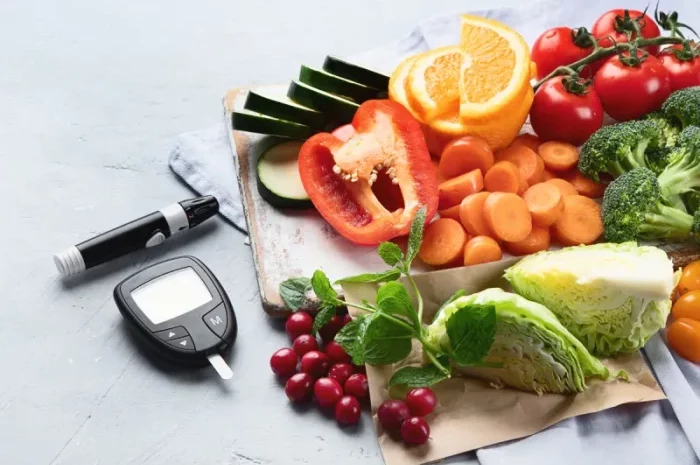Diabetes management is an ongoing process that requires careful attention to diet, exercise, and medication. Among the various components of a healthy diet for people with diabetes, fiber plays an essential role in managing blood sugar levels. Fiber is a type of carbohydrate that the body cannot digest, and it is known for its ability to slow the absorption of sugar, thereby preventing rapid spikes in blood glucose levels. For individuals with diabetes, incorporating high-fiber foods into daily meals can be a crucial strategy for achieving better blood sugar control and overall health.
This article explores the best high-fiber foods for diabetics, explaining their benefits, the science behind fiber’s role in diabetes management, and practical ways to incorporate these foods into a diabetes-friendly diet.
The Role of Fiber in Diabetes Management
Fiber is divided into two main categories: soluble fiber and insoluble fiber. Both types of fiber offer significant health benefits, especially for individuals with diabetes.
Soluble Fiber:
Soluble fiber dissolves in water to form a gel-like substance, which helps slow digestion and the absorption of nutrients, including glucose. By slowing the rate at which sugar enters the bloodstream, soluble fiber helps stabilize blood sugar levels and reduces the risk of blood sugar spikes after meals.
Insoluble Fiber:
Insoluble fiber does not dissolve in water and passes through the digestive system largely unchanged. It adds bulk to stool and promotes regular bowel movements. While its impact on blood sugar control is less direct than soluble fiber, it supports overall gut health and digestive function, both of which are essential for individuals managing diabetes.
Together, these types of fiber can help individuals with diabetes improve insulin sensitivity, reduce the risk of cardiovascular complications, and maintain a healthy weight—all of which contribute to better overall diabetes management.
Health Benefits of High-Fiber Foods for Diabetics
High-fiber foods provide a variety of health benefits, particularly for individuals with diabetes. Some of the key benefits include:
1. Better Blood Sugar Control:
As mentioned earlier, fiber, especially soluble fiber, slows the absorption of sugar into the bloodstream, helping to prevent rapid spikes in blood glucose. This is particularly important for people with diabetes, as maintaining stable blood sugar levels can reduce the risk of both short-term and long-term complications.
2. Improved Cholesterol Levels:
High-fiber foods, particularly those rich in soluble fiber, have been shown to help lower LDL (bad) cholesterol levels and reduce the risk of heart disease. Since individuals with diabetes are at an increased risk of cardiovascular problems, eating fiber-rich foods can offer an additional layer of protection for heart health.
3. Weight Management:
High-fiber foods are often low in calories but high in volume, which helps increase satiety and reduce overall calorie intake. This can support weight loss and weight management, which is particularly important for people with type 2 diabetes, as maintaining a healthy weight improves insulin sensitivity and overall blood sugar control.
4. Gut Health and Digestion:
Fiber promotes healthy digestion by preventing constipation and supporting the growth of beneficial gut bacteria. A healthy gut microbiome is crucial for metabolic health and insulin sensitivity, both of which are essential for managing diabetes.
5. Reduced Risk of Complications:
By helping to regulate blood sugar, cholesterol, and weight, fiber-rich foods can help reduce the risk of diabetes-related complications, such as diabetic neuropathy, kidney disease, and eye problems.
The Best High-Fiber Foods for Diabetics
Incorporating a variety of high-fiber foods into your daily diet is an effective strategy for managing diabetes. Here are some of the best fiber-rich foods that are especially beneficial for individuals with diabetes:
1. Legumes and Beans
Legumes, such as lentils, chickpeas, and various types of beans (e.g., black beans, kidney beans, navy beans), are among the best high-fiber foods for people with diabetes. Not only are they rich in fiber, but they also provide plant-based protein and essential vitamins and minerals, making them a nutritious addition to any meal.
Fiber Content: 7 to 9 grams of fiber per half-cup serving
Benefits: Legumes have a low glycemic index (GI), meaning they have a minimal effect on blood sugar levels. They are also high in resistant starch, a type of carbohydrate that resists digestion and further helps stabilize blood sugar. Additionally, the combination of fiber and protein in legumes makes them an excellent food for weight management.
How to Incorporate:
-
Add beans to salads, soups, and stews.
-
Enjoy hummus made from chickpeas as a snack.
-
Prepare lentil-based dishes like lentil curry or lentil salads.
2. Whole Grains
Whole grains, such as oats, quinoa, barley, brown rice, and whole wheat, are excellent sources of fiber. Unlike refined grains, which have been stripped of their fiber and nutrients, whole grains retain the bran, germ, and endosperm, which are rich in fiber.
Fiber Content: 3 to 5 grams of fiber per half-cup serving
Benefits: Whole grains help regulate blood sugar levels by slowing down the absorption of sugar. They also provide important vitamins, minerals, and antioxidants that contribute to heart health and overall well-being. Additionally, consuming whole grains instead of refined grains can reduce the risk of developing type 2 diabetes.
How to Incorporate:
-
Start your day with a bowl of oatmeal or whole-grain cereal.
-
Use quinoa or barley as a base for salads or side dishes.
-
Swap out white rice for brown rice or other whole grains in your meals.
3. Vegetables
Vegetables, especially non-starchy ones, are rich in fiber and low in calories, making them ideal for diabetes management. Leafy greens like spinach, kale, and collard greens are particularly high in fiber, as are cruciferous vegetables like broccoli, cauliflower, and Brussels sprouts.
Fiber Content: 2 to 5 grams of fiber per serving (depending on the vegetable)
Benefits: Vegetables are low in carbohydrates and have a minimal impact on blood glucose levels, making them an excellent choice for those managing diabetes. Their high fiber content helps regulate blood sugar and improve digestion. Moreover, vegetables are packed with vitamins, minerals, and antioxidants that support overall health.
How to Incorporate:
-
Add a variety of vegetables to salads, soups, and stir-fries.
-
Use leafy greens as a base for smoothies or wraps.
-
Steam, roast, or sauté cruciferous vegetables as side dishes.
4. Berries
Berries, such as raspberries, blackberries, and strawberries, are some of the highest-fiber fruits available. They are also rich in antioxidants, which can help reduce inflammation and support heart health.
Fiber Content: 3 to 8 grams of fiber per cup (depending on the type of berry)
Benefits: Berries have a relatively low glycemic index compared to other fruits, making them an ideal choice for people with diabetes. The soluble fiber in berries helps slow the absorption of sugar, while the antioxidants promote overall health.
How to Incorporate:
-
Add berries to yogurt, oatmeal, or smoothies.
-
Enjoy a handful of fresh berries as a snack.
-
Use frozen berries in baking or as a topping for desserts.
5. Nuts and Seeds
Nuts and seeds, including almonds, chia seeds, flaxseeds, and walnuts, are high in fiber and healthy fats. They are also rich in protein, which can help maintain muscle mass and support overall metabolic health.
Fiber Content: 2 to 5 grams of fiber per ounce (depending on the type of nut or seed)
Benefits: Nuts and seeds are low in carbohydrates, making them a great option for blood sugar control. The fiber, healthy fats, and protein in these foods help regulate blood glucose levels and promote satiety, reducing the likelihood of overeating.
How to Incorporate:
-
Snack on a handful of mixed nuts or seeds.
-
Add chia seeds or flaxseeds to smoothies, yogurt, or baked goods.
-
Use almond butter or peanut butter as a spread or dip.
6. Avocados
Avocados are not only a good source of healthy fats but also a rich source of fiber. This creamy fruit is versatile and can be added to a variety of dishes.
Fiber Content: 10 grams of fiber per avocado (one medium-sized avocado)
Benefits: Avocados are low in carbohydrates, and their high fiber content helps stabilize blood sugar levels. In addition to fiber, they are packed with monounsaturated fats, which promote heart health by reducing bad cholesterol levels.
How to Incorporate:
-
Enjoy avocados in salads, sandwiches, or as a topping for toast.
-
Make guacamole as a healthy snack.
-
Add avocado to smoothies for a creamy texture.
7. Sweet Potatoes
Sweet potatoes are rich in fiber, vitamins, and antioxidants. They are also a great source of complex carbohydrates, which provide a slow and steady release of glucose into the bloodstream.
Fiber Content: 4 grams of fiber per medium-sized sweet potato
Benefits: The high fiber content of sweet potatoes helps regulate blood sugar levels and improve digestion. They are also lower on the glycemic index compared to white potatoes, making them a better option for people with diabetes.
How to Incorporate:
-
Roast or bake sweet potatoes as a side dish.
-
Add mashed sweet potatoes to soups or stews.
-
Use sweet potatoes as a base for savory or sweet casseroles.
Conclusion:
Incorporating high-fiber foods into your diet is a powerful and effective way to manage blood sugar levels and support overall health. Whether you are living with diabetes or looking to reduce your risk of developing the condition, consuming a variety of fiber-rich foods such as legumes, whole grains, vegetables, berries, nuts, seeds, avocados, and sweet potatoes can make a significant difference.
By focusing on whole, nutrient-dense foods that are high in fiber, individuals with diabetes can achieve better blood sugar control, reduce the risk of complications, and improve their quality of life. As always, it is essential to work with a healthcare provider or registered dietitian to develop a personalized diet plan that meets your unique health needs and goals.
Related topics:
What Are Healthy Fruits for Diabetics?



























